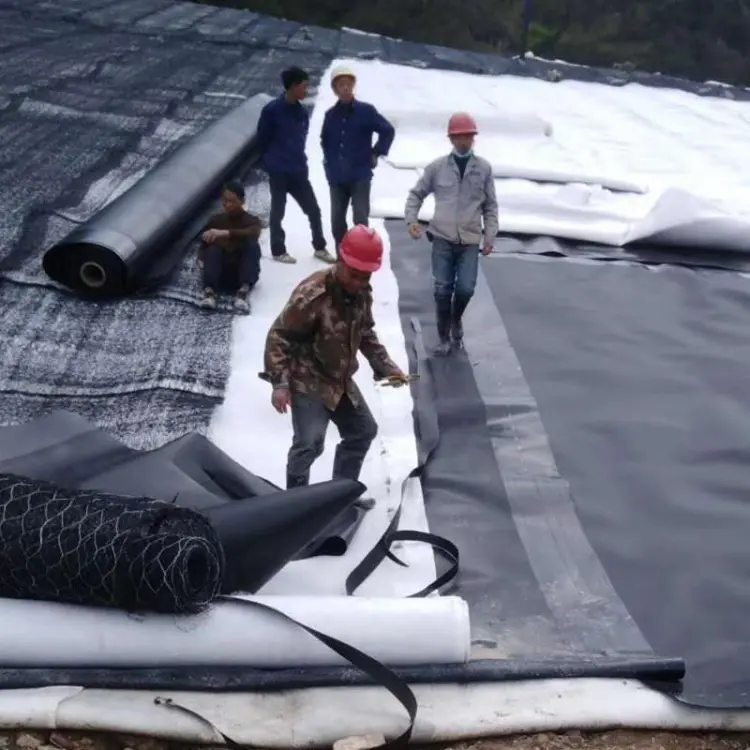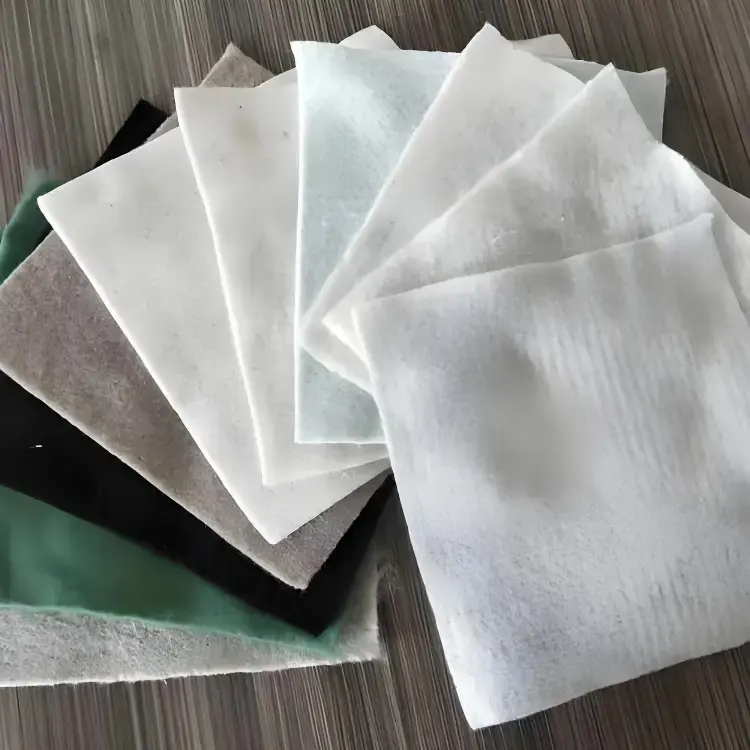Geosynthetics refer to polymeric materials or engineered polymer products extensively used in modern geotechnical and civil engineering projects. They are generally categorized into four primary types: geotextiles, geocomposites, geomembranes, and specialized geosynthetics. These materials provide critical functions including filtration, drainage, separation, reinforcement, protection, and impermeability. Field applications demonstrate that geosynthetics offer simplified construction, quality assurance, and significant cost-effectiveness while integrating multiple functional properties.
Geotextiles & Geotextile Bags for Slope Protection
In Northeast China’s prolonged cold winters, most embankment slopes suffer damage from ice thrust pressure, soil frost heave, and wave erosion. Conventional gravel filters often deform or slip, whereas geotextile-replaced gravel filters effectively mitigate these issues. Geotextiles also serve as filters for earth dam core walls, drainage layers behind retaining walls, and sluice outlets. Geotextile bags – valued for high construction efficiency, adaptability to irregular terrain, lightweight fabric, strength, and submarine installation without dewatering – are widely deployed as protective surfacing for riverbanks, canals, and reservoir slopes. Fabric-formed bags are filled with mortar or concrete in situ. Their design accounts for ice thrust stability, tensile strength along slopes, and foundation bearing capacity, preventing sliding or rolling under wave action. This continuous casting method enhances ice/wave resistance and delivers superior structural integrity, establishing it as an advanced slope protection solution.
Geosynthetics in Flood Emergency Response
Selection criteria include application requirements and protected soil gradation. Commonly used varieties include woven bags, woven fabrics, non-woven geotextiles, and geomembranes. During recent flood events, geosynthetics remain indispensable: woven bags construct emergency levees, while reinforced polyethylene sheets combat wind-driven waves. Their advantages encompass structural integrity, rapid deployment, adaptability, compact storage, cost efficiency, durability, and reusability.
Geotextiles for Soil & Water Conservation
In areas lacking quarry stone, fragile earthen check dams (tǔ gǔfāng) often fail during floods. Transporting external stone is uneconomical. Nylon woven bag check dams offer an alternative for gully control, featuring low cost, simple construction, structural robustness, and erosion resistance. This approach effectively manages gully expansion and soil erosion, demonstrating significant potential for combating land degradation.

Geotextile-Reinforced Retaining Walls
Geotextiles are horizontally layered within fill soil, with ends wrapped back to encapsulate soil. Soil-fabric friction provides reinforcement and stability. These flexible geotextile walls impose minimal foundation requirements and adapt well to remote regions with material shortages. Benefits include low material costs, simplified construction, and cost savings – particularly suitable for permafrost regions susceptible to freeze-thaw damage.
Composite Geomembranes for Embankment Seepage Control
Geomembranes are highly efficient impermeable barriers. When composite geomembranes in embankments connect to vertical plastic-geocomposite curtains, they form integrated seepage-control systems that prevent piping and soil liquefaction while reducing project costs. Successful implementations include:
- Songhua River’s Fujin East Dike (Longyan weak section and Zhengdong segment)
- Harbin Moon Bay Development Zone embankment
Hybrid systems combine geomembranes (impermeability) with geotextiles (filtration), overlain by soft soil for foundation stabilization – effectively sealing leakage paths in dam foundations and abutments.

